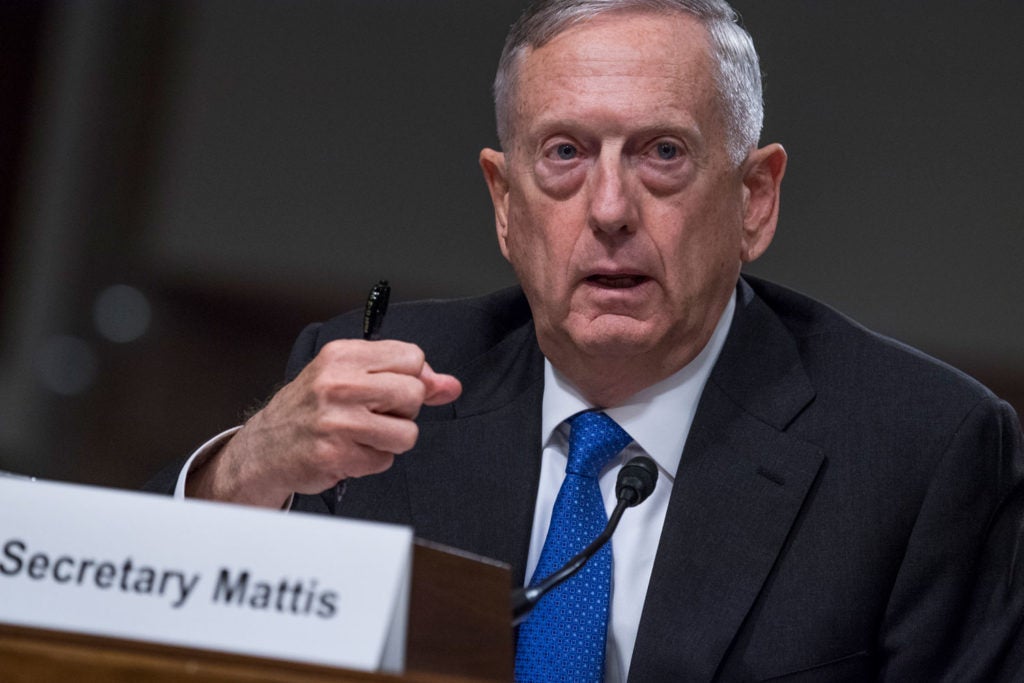Leaders in the business world often have to make painful decisions in order to meet long-term strategic goals and keep up with market trends.
For example, Sears Holdings announced earlier this year that it plans to close 150 unprofitable Sears and Kmart stores. If Sears Holdings attempted to keep these stores open, it would damage its ability to consolidate and remain competitive in the market.
The Department of Defense sometimes similarly recognizes where episodic reductions would benefit the military in the long term. But unlike Sears Holdings, Pentagon officials have comparatively little freedom to manage their own infrastructure due to legal restrictions imposed by Congress in 1977.
Congressional oversight has hindered the Pentagon’s ability make strategic decisions about the military’s future and adapt to the evolving security environment. As a result, the Department of Defense is forced to keep open military bases that are no longer strategically significant.
According to a 2016 Department of Defense report requested by Congress, the Air Force has 32 percent excess capacity, the Army has 33 percent excess capacity, and the Navy has 7 percent excess capacity.
In many cases, this excess infrastructure is deteriorating due to neglect and lack of use. An Army official recently testified before Congress that roughly 33,000 of its buildings are in poor or failing condition—nearly a quarter of all Army real estate.
Because infrastructure reductions are often politically challenging to make, the best solution is for Congress to authorize another round of the base realignment and closures.
The base realignment and closure process allows the Pentagon to comprehensively evaluate its infrastructure and make recommendations for closure and realignment to the president and then to Congress. The legislative branch then votes up or down on an entire package of infrastructure modifications.
This businesslike approach allows the Pentagon to take actions that have reduced costs in the long term and ultimately strengthened the armed forces. The Pentagon has engaged with Congress for five base realignment and closure rounds in the past, with the first taking place in 1988.
The Department of Defense estimates that past rounds have cumulatively produced $12 billion in annual recurring savings. A new round can continue this trend of improving efficiency and help confront pressing security challenges by freeing up resources that the Department of Defense could more wisely allocate.
As Secretary of Defense James Mattis argued before Congress recently, “[A] properly focused base closure effort could generate $2 billion or more annually.” Mattis further noted that this amount could buy 300 Apache attack helicopters, 120 F/A-18E/F Super Hornets, or four Virginia-class attack submarines.

Testifying before Congress in June, Defense Secretary James Mattis asked for a “properly focused base closure effort” as well as a $54 billion increase in base defense spending. (Photo: Tom Williams/CQ Roll Call/Newscom)
The military has many areas where it needs to bolster its capabilities, whether it’s growing the undersized Navy fleet or modernizing aging Army tanks. Reducing fixed costs, related to excess infrastructure allows the Pentagon to reinvest those funds in programs that can directly enhance U.S. security concerns.
So far, despite requests from the administration, Congress has been reluctant to authorize another round of base realignment and closures.
As a consequence, if this reluctance is not overcome, taxpayers will have to continue paying for unneeded defense infrastructure, not realizing the long-term savings that could be reinvested into important military priorities.
Both of the recently released House and Senate markups for the National Defense Authorization Act (NDAA) do not include authorization for another base realignment and closure round.
The House NDAA markup took this reluctance even a step further by prohibiting the use of funds for a new round. The Senate version also came out of committee with the same language prohibiting a new round.
Opponents of a new round have cited shortcomings from the 2005 round and believe excess infrastructure should be used to rebuild the military. These concerns are unfounded.
As noted in a recent Heritage Foundation report, Congress can play a critical role in producing optimal results in the next round of base realignment and closures that both saves taxpayer dollars and properly funds the armed services.
For example, the 2005 round was primarily focused on transforming Department of Defense infrastructure and changing its footprint. Congress can thus direct a new round to focus primarily on cost savings and reinvestment.
Congress can also provide oversight to ensure that a new round matches the new National Security Strategy once the White House issues it. This approach would make sure that the Pentagon dedicates resources to emerging threats and subsequent military requirements, while reducing unnecessary assets.
Lastly, Congress can set reduction targets for the next base realignment and closure commission. This would improve the cost projections for a new round and the amount of funds it could save.
Additionally, mandating updates to the software that help assess different infrastructure options can correct the flaws that led to cost overruns in 2005.
The bottom line is that base realignment and closures can create desperately needed savings within the Department of Defense. It allows the Pentagon to adopt a businesslike solution while properly sizing its infrastructure for warfighting needs.
In realizing the value of a new base realignment and closure round, Congress can reduce waste and help the military rebuild its capacity, readiness, and capabilities.
This piece originally appeared in The Daily Signal



